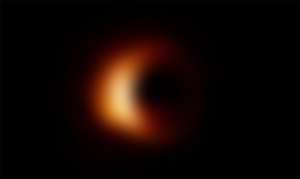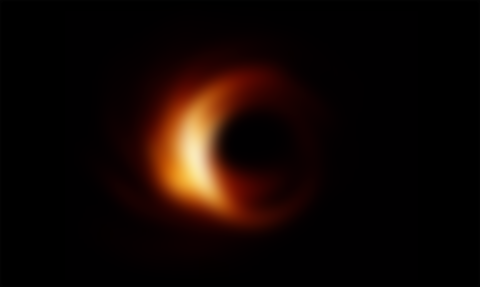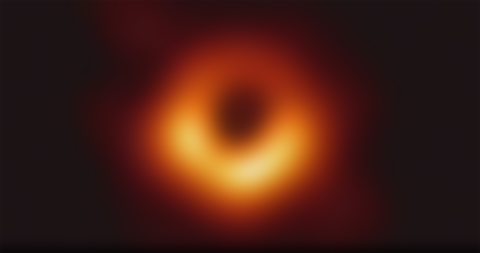
If you are interested in science and if you are trying to find out about the various discoveries of science or if you are only aware of the happenings in the outside world for the purpose of keeping pace with the times, then you must hear the name Blackhole. If you are a movie lover, especially science fiction movies, then Blackhole is very familiar to you. Christopher Nolan's 2014 movie Interstellar was the center of attraction for this amazing black hole. In movies like this, we see that a black hole is a black object that roams in different parts of space. Nothing can go near the edge of the object and come back. Everything seems to be lost somewhere while crossing the object. The idea is taken deeper and deeper in Christopher Nolan's Interstellar movie.
So far we have had the idea of what happens outside the black hole, the movie tries to give an idea of what actually happens inside the black hole. It is natural that science fiction movies do not have the truth of everything shown in it. But one thing the movie has done very successfully, and that is that it has created a lot of interest in black holes among the general audience. This blog was written to satisfy the general public's interest in black holes. Here we have tried to discuss all the necessary information about the black hole from a scientific point of view. Let's not know what the black hole seen from the science fiction movie is actually, why or why it is in the center of interest, because of what features it is very different from other objects in space.
What is a black hole?

The first prediction of a black hole was given in Einstein's Theory of General Relativity. In theory the gravitational force is imagined as a spiral of space and time by mass and energy. The equation of this theory was predicted that when excess mass or energy accumulates in a certain place outside a certain limit, space and time fall. This phenomenon created a sink hole, so that light and objects could enter but not exit.
At first this theory was not considered part of astronomy but as a mathematical error or abnormality. But over the past century, scientists have been forced to believe that black holes do exist.
The edge of the black hole is called the event horizon. In order to cross this edge of a black hole, the object must be faster than the speed of light. Since nothing faster than light has been discovered so far, we can assume that there is no way back from the edge of a black hole. The black hole is surrounded by an accusation disc. The disc is made of dust and gas. This disk rotates in its orbit at speeds close to the speed of light. While some of these objects emit strong radiation, most travel to oblivion.
At the very center of each black hole is a place called singularity. Here the density of a black hole is infinitely compressed in an infinitely small space. Simply put, black holes are some of the most powerful wells of gravity. They are thought to have begun to exist shortly after the Big Bang. They are also caused by the fall of different stars.
History of research on black holes
Geologist John Mitchell was the first to provide an initial idea of a black hole. He explained the black hole by an object of massive mass whose gravitational ball could not get out of it until the light wave. John Mitchell stated this in a letter to Henry Cavendis, a member of the Royal Society and a scientist, in 183. The mathematician Pierre Simon Laplace gave the same doctrine as John Mitchell in the first and second editions of a famous book he wrote in 1896. However, later versions of the book did not cover these concepts of black holes. Such doctrines about black holes resurfaced in the nineteenth century. Because man could not understand why and how a wave like light could be affected by the force of gravity.
Theory of General Relativity

The world-famous scientist Einstein presented his famous Theory of General Relativity in 1915. Basically, this theory started a new horizon in the study of black holes. Prior to this theory, there was evidence that the force of gravity could affect the wave of light, but that evidence strengthened the theory. A few months later, Schwarzschild came up with a solution to the Einstein field equation that provides a detailed explanation of the gravitational field of point mass and spherical dawn. In another study by scientist Hendrik Lorenz's student Johannes Drost Independent, Einstein came up with another similar solution in the equation field and published more detailed information about the properties of gravitational fields of point and sphere mass.
Schwarzschild's behavior was somewhat bizarre. This strange behavior is called Schwarzschild radius. Here everything becomes singular, that is, some terms in Einstein's equation become infinite. Oppenheimer and his colleagues provide an explanation of this singularity. The singularity at the edges of the Schwarzschild radius acts as if the edges are the boundary of a bubble where time is fixed. The matter of time being fixed is true for any external visitor. But for a visitor with a reading of a black hole, things are a little different. These falling stars are called "frozen stars" because of these qualities. This is because when an object moves within the Schwarzschild radius, the external observer will feel frozen during the star's surface. That means he will have a fixed time.
In 1956, David Finkelstein named the Schwarzschild Radius Event Horizon. He describes it as a one-way screen through which anything can pass only one-way. In the golden age of general relativity, black holes became a mainstream subject of research. But after the discovery of the pulsar by Jocelyn Bell Burnell, the theories of the black hole, the neutron star, saw the possibility of its existence in reality. John Mitchell called these fallen stars the Dark Star. But Wheeler later heard the name Blackhole from one of his students and began using the name for its advertising value.
The structure of the black hole
Although it is possible to create a black hole in various ways, the stars naturally shrink and turn into a black hole. The nearest star to us is the Sun. Its extent is about 130 crore kilometers. Its mass is about 2 * 10 ^ 3 kilograms. Due to such unusual storms of stars, their gravitational force is very strong. As a result, the entire solar system, called the Sun, is able to rotate in its orbit around it. The relation of mass to the force of gravity is easily understood by the law of gravitation. According to the law of gravity, if the product of the gravitational constant with the product of the masses of two objects is divided by the square of the distance between the centers of the two objects, what is found is the measure of the force of gravity.
Now imagine what would happen if one of these objects began to shrink due to a very strong gravitational ball caused by its external extreme temperature?
What will happen is that the distance between the second and the next object will decrease a lot, but the mass of the object will be the same as before and the amount of gravitational ball between them will increase a lot. However, as soon as the star disappears, it does not turn into a black hole. The star must have a certain radius in order to become a black hole. The amount of this radius is called the Schwarzschild radius. If the specific radius of the Schwarzschild radius can acquire a fading star, it will acquire the main properties of being a black hole.
Features of black holes

Black holes have some special and exceptional features that set them apart from other creatures in space. Let's not know about those features.
Event Horizon
According to the Theory of General Relativity, the event horizon is the last point of return. At this point the force of gravity is so strong that it is impossible for any object to return from here. This is also true of light. Event Horizon is the place and time boundary of an event outside of which it has no effect on the observer. The location of this event horizon is around a black hole. The black hole looks black because of the event horizon. Because light is emitted from inside the black hole, it cannot reach the observer. That black hole goes back to this.
As a particle moving towards a black hole passes through the event horizon, an observer outside will feel as if the particle is slowly moving. This is because the space in the event horizon and the time remain frozen for the observer. But if the observer himself continues to move towards the black hole and cross the event horizon, he will not see anything like the observer outside. Because to him his own time would seem normal. If the black hole is rotating, the event horizon will be orange. And if the black hole is static in nature, then the size of the event horizon will be much rounder.
Singularity
At the center of a black hole is the theory of general relativity called gravitational singularity. At this point the space-time curvature becomes infinite. Interestingly, the area of this singularity is zero but the density is almost infinite. This is because almost the entire mass of a black hole accumulates in its singularity. If an observer enters the Schwarzschild radius and continues to travel towards the black hole, it will gradually fall into singularity and become one with the mass of the black hole. However, before reaching the singularity, the body of the observer will be torn apart due to the extra strong gravitational ball. There the gravitational force is so strong that if one part of your body is a little closer to the black hole than the other when moving towards the black hole, that part will feel much more tension and will start to detach.
Photon zone
There is a circular boundary around the black hole so that the photon particles continue to rotate along an orbital path. If light enters the inbound trajectory in this photon zone, it can no longer exit. If any light from a black hole reaches an outside spectator, it must be assumed that the light is emitted from an object between the photon zone and the event horizon.
Argo Mandal
Around the rotating black hole is a space-time zone called the Argo Zone where it is impossible to remain stationary. Space time always feels tension around any rotating object. The same is true of Argo Mandal. Objects and radiation can be emitted from this sphere.
Creation and growth of black holes

Black holes can occur in a variety of ways. If the internal pressure of an object is not strong enough to resist its gravitational force, the object will shrink and a black hole may form. There is another opinion about the creation of black holes. That is the beginning of the black hole during the creation of the universe through the Big Bang. The Big Bang is a huge explosion. Before the creation of the known universe around us, the entire universe was centered in one center. This center spread over a huge area through an explosion. This vast area is our universe. In other words, the Big Bang is at the root of the creation of everything in the universe. The Big Bang Theory was provided by the late Stephen Hawking. The idea is that the early black holes originated from this Big Bang. Lots of strong collisions can result in black holes. Once a black hole is formed, it can increase its mass by pulling various objects around it by gravitational force. Thus black holes gradually develop





thanks for informative article.....i hope this blackhole doesnt exist